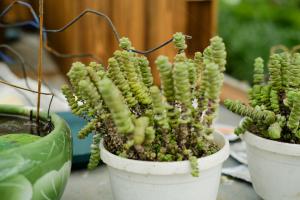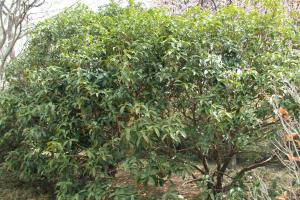How to Take Care of Potted Plants at Home
If you love plants but don't have access to a garden or outdoor space, potted plants can be an excellent way to bring some greenery into your home. Taking care of potted plants can be a rewarding experience, but it requires some effort and attention. Here are a few tips on how to take care of potted plants at home:
Choosing the Right Container
The first step in taking care of your potted plants is to choose the right container. The container should be the correct size for the plant with sufficient drainage and air circulation. Selecting the size of the container depends on the size of the plant and its root system.
The container chosen should have several holes at the bottom to allow water to drain effectively. Ensure that the container is not too snug for the plant, a container that is too small can limit the root growth and affect its overall health. The container should have adequate air circulation to the roots by providing larger holes in the container.
Soil and Fertilizer
Another vital aspect of taking care of potted plants is the soil and nutrient requirements. Potted plants require a suitable soil mix to thrive. A standard mix is a combination of one part of vermiculite, two parts of peat moss, and two parts of potting soil. You can also add some organic matter like compost or manure to enrich the soil.
Secondly, providing fertilizer to potted plants is essential. Fertilizers provide essential nutrients for the plants that are not readily available from soil. Follow the instructions provided with the fertilizer to learn how much and how often to apply them to the plants.
Watering
Watering is one of the essential components of taking care of potted plants. Over and under watering is the most common problem with potted plants. An over-watered plant is likely to suffer from root rot, whereas an under-watered plant is at risk of wilting or even dying.
The key is to find the right balance. Always check the soil before watering the plants. Water the plants when the soil is dry about one inch below the surface. Never overwater, but ensure plants receive enough water to enable them to absorb the nutrient and minerals the plant requires.
Light and Temperature
Light and temperature are crucial factors for taking care of potted plants at home. Different plants have diverse light and temperature requirements, different light levels or temperature exposure can impact the growth and overall health of the plant. Some plants prefer brighter light while others prefer indirect sunlight, so it's important to research the plants' light requirements.
Similarly, the temperature of the room is also essential for the health of the plants. Most potted plants prefer temperatures between 65 to 75 degrees Fahrenheit, but some plants, such as cacti, prefer areas with higher temperatures.
Trimming and Maintenance
Trimming and maintenance play a significant role in ensuring that your plant stays healthy and doesn't become too large for the container. Dead leaves, branches or flowers should be removed promptly to prevent diseases from spreading. Trimming and pruning excess growth will help maintain the plant's appearance and promote new growth.
Finally, keep the area around the plants clean and tidy. Clean the container regularly and remove fallen leaves, debris, or insects that may damage the plant.
The Bottom Line
Taking care of potted plants is not rocket science, but it requires some effort and attention to detail. The key to success is familiarizing yourself with your plants' specific requirements regarding light, temperature, watering, and fertilizing. With a little bit of love and care, your potted plants will flourish, bringing beauty and serenity to your home.

 how many times do yo...
how many times do yo... how many planted tre...
how many planted tre... how many pine trees ...
how many pine trees ... how many pecan trees...
how many pecan trees... how many plants comp...
how many plants comp... how many plants can ...
how many plants can ... how many plants and ...
how many plants and ... how many pepper plan...
how many pepper plan...






























